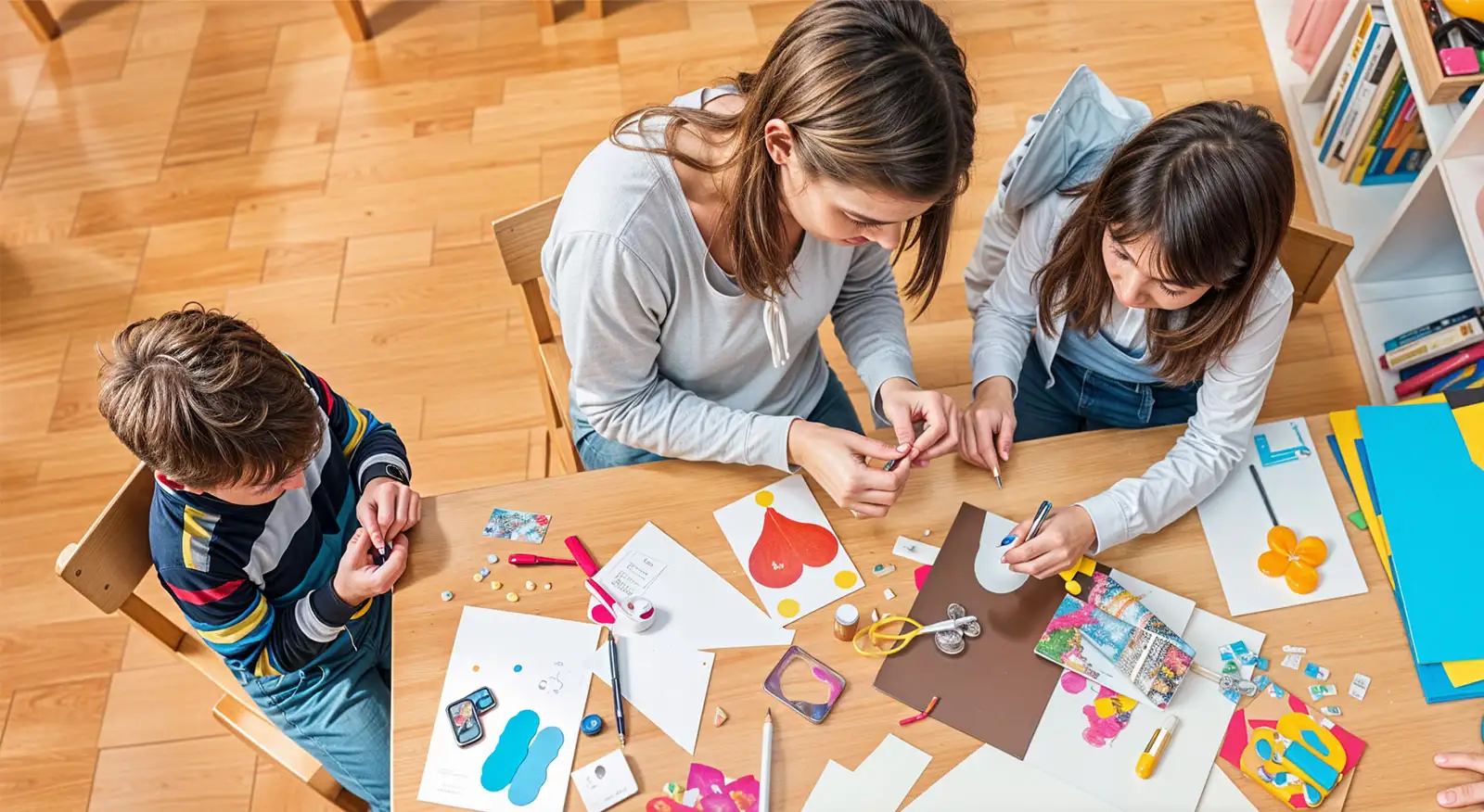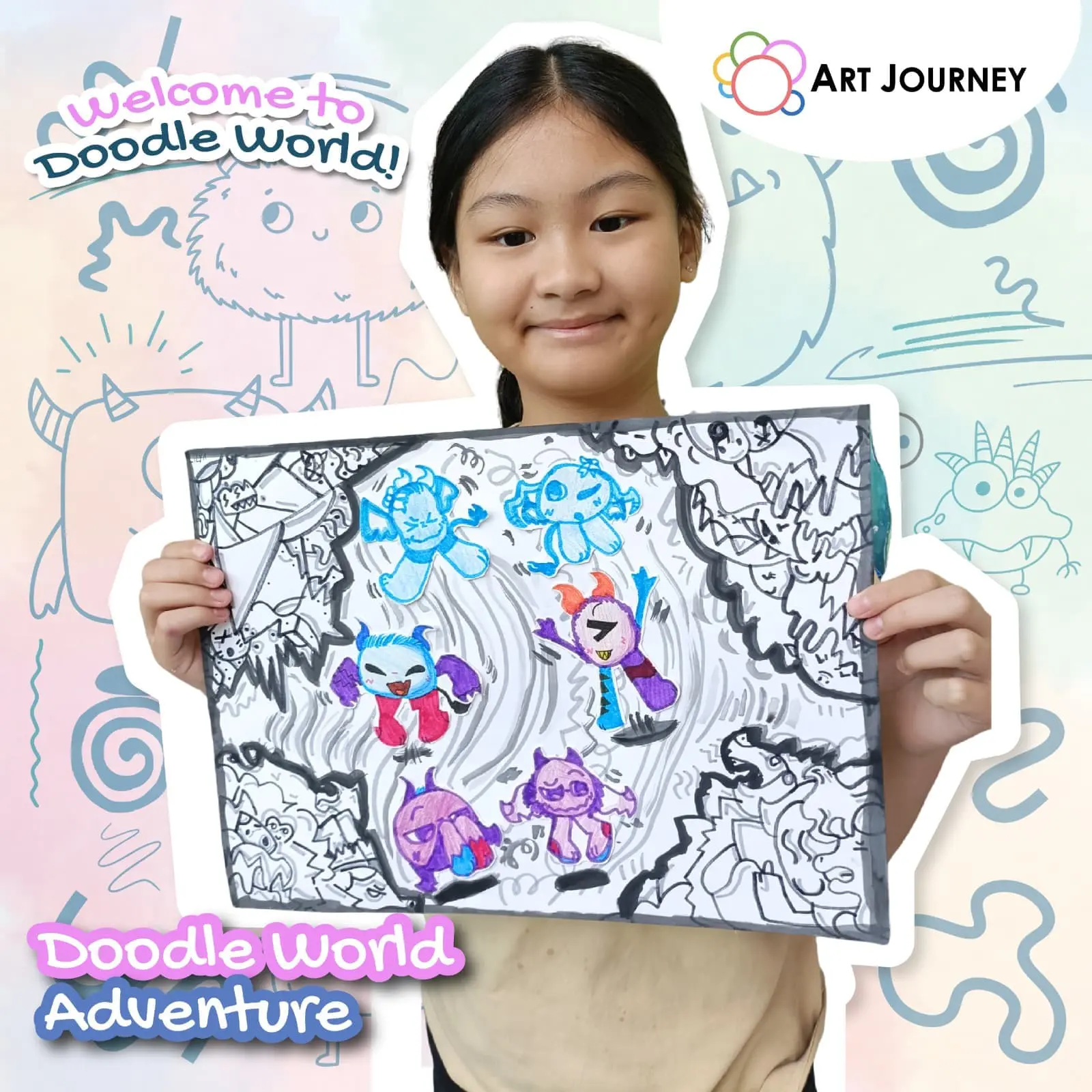
Art has always been a powerful tool for self-expression and creativity. For students, engaging in art workshops goes beyond creating beautiful works; it enhances their cognitive and emotional development, encourages problem-solving, and fosters critical thinking. At Art Journey, we believe in the transformative power of art and its ability to inspire students to unlock their full creative potential. Here’s how art workshops can make a profound impact on students:
1. Encouraging Creative Expression
One of the key benefits of art workshops for students is the opportunity to express their creativity in a structured yet free-flowing environment. Whether it’s painting, sculpting, or crafting, art provides a platform for students to explore their thoughts, ideas, and emotions. This creative expression allows them to communicate in ways words cannot, promoting self-confidence and self-awareness.
In a typical studio setting, students may be limited by standardized curricula and rigid structures. However, art workshops encourage them to step outside of these boundaries and explore unconventional ideas. This freedom to experiment with various media and techniques helps students develop a personal style, fostering creativity that extends beyond the art studio and into other areas of their lives.
2. Building Problem-Solving and Critical Thinking Skills
Art is not just about creating something visually appealing—it’s also about solving problems. Whether it’s deciding how to mix colors, choosing the right materials, or figuring out the composition of a piece, students constantly face decisions that require critical thinking. These decisions teach them to analyze, evaluate, and rethink their approaches to challenges.
For example, when a student is working on a painting, they might need to figure out how to blend colors to achieve the right shade or how to balance the elements of the composition. These challenges encourage them to develop problem-solving skills that can be applied to other areas of their education and personal life. Through art, students learn that mistakes are not failures but opportunities to explore new solutions.
3. Enhancing Focus and Patience
Art workshops also require students to slow down, pay attention to detail, and focus on the task at hand. Whether they’re working on intricate designs or carefully layering paint, students learn the importance of patience and persistence. This focus helps develop their attention span, which is essential not only for artistic endeavors but also for academic success.
The slow and deliberate nature of art-making encourages mindfulness, allowing students to fully immerse themselves in the creative process. In a world full of distractions, art workshops offer students a space to disconnect from their phones and technology and focus solely on their creative work. This sense of calm and presence is essential for their emotional well-being and academic performance.
4. Boosting Confidence and Self-Esteem
Art workshops give students the chance to experiment and create without the fear of judgment. When students successfully complete a piece of art, whether it’s a painting, sculpture, or craft project, they gain a sense of accomplishment that boosts their confidence and self-esteem. Unlike traditional subjects that often have right or wrong answers, art allows for individuality and personal expression, creating an environment where every student’s work is valued.
Students can take pride in their creations, knowing that they’ve invested time and effort into something unique and meaningful. This sense of pride translates into greater self-confidence, making students feel more empowered in other areas of their life as well. The positive reinforcement of completing a creative project can also inspire them to take on new challenges and try new things, both in and outside the studio.
5. Fostering Collaboration and Teamwork
While art workshops often encourage individual creativity, they also provide opportunities for collaboration and teamwork. Group projects, such as creating large murals or working together on a sculpture, help students learn how to work with others, share ideas, and combine their unique skills to produce something greater than what they could achieve alone. Collaboration fosters a sense of community and belonging, which is essential for emotional development.
In a collaborative art project, students learn how to compromise, communicate their ideas, and appreciate the perspectives of others. This teamwork not only improves their social skills but also teaches them the value of collective creativity. Students learn that different ideas and approaches can come together to create something beautiful and powerful.
6. Connecting Art with Other Subjects
Art workshops often inspire students to make connections between their creative work and other subjects they’re studying. Whether it’s exploring the history of art in a social studies session, studying the physics of color mixing in a science workshop, or drawing inspiration from literature or poetry, art provides a way to integrate knowledge from various disciplines.
By connecting art with other subjects, students see the interdisciplinary nature of learning and begin to appreciate how art complements and enhances other academic areas. This approach helps students gain a deeper understanding of the subjects they study and encourages them to think more holistically about the world around them.
7. Exploring Different Cultures and Perspectives
Art workshops provide a unique opportunity for students to learn about and appreciate different cultures through their artistic traditions. By exploring various art forms, such as Chinese brush painting, African beadwork, or European Renaissance techniques, students gain insight into the diversity of human expression.
This exposure to different cultures fosters empathy, tolerance, and an appreciation for the richness of human creativity. As students explore art from around the world, they broaden their understanding of other perspectives and gain a global outlook that is valuable both academically and personally.
8. Promoting Emotional Well-Being
Art workshops serve as a therapeutic outlet for students to express their emotions. Whether they’re feeling happy, sad, anxious, or excited, art provides a safe space for students to channel their feelings into their creative work. This emotional expression helps students process their emotions and cope with stress, promoting emotional well-being.
By engaging in art, students can release pent-up emotions, improve their mood, and develop a sense of inner peace. The creative process serves as a form of self-care that supports students’ mental health, helping them build resilience and emotional strength.






